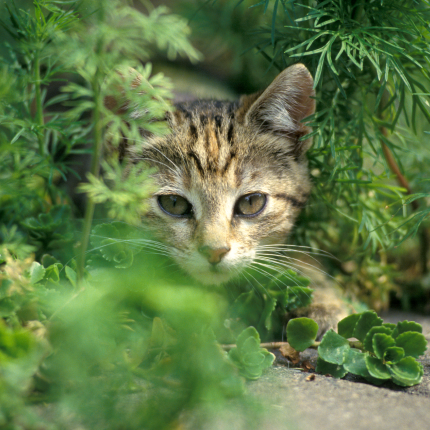Exploring the Evolutionary Origins of Nepetalactone in Catnip

Catnip, scientifically known as Nepeta cataria, has long fascinated both cat owners and scientists. This herb, a member of the mint family, induces unique behaviors in many cats, thanks to a compound called nepetalactone. But where did this intriguing substance come from, and why does it affect cats peculiarly?
Nepetalactone is an organic compound found in plants, specifically in tiny glands on catnip plants’ leaves, stems, and seed capsules. When cats interact with catnip, these glands release nepetalactone into the air, triggering various reactions in felines, from playful antics to relaxation.
The Mystery Behind Nepetalactone
The effects of nepetalactone on cats vary widely among individuals. Some cats become more affectionate and playful, while others may appear calmer or more energetic. Interestingly, not all cats are affected by catnip, with around 30-50% showing no response at all. This variability has puzzled scientists, leading to investigations into the evolutionary origins of the effects of nepetalactone.
Researchers suspect that catnip may have evolved the ability to affect cats as a form of chemical defense against plant-eating pests. Nepetalactone is believed to act as a natural insect repellent, protecting the catnip plant from damage. However, the precise mechanisms underlying its effects on cats remain the subject of ongoing research.
Insights from Genetic Studies
Recent genetic advances have provided new insights into how nepetalactone is produced in catnip plants. Studies have identified key enzymes involved in synthesizing nepetalactone, shedding light on the biochemical pathways responsible for its production. By understanding the genetic basis of nepetalactone production, scientists hope to gain a deeper understanding of its evolutionary significance.
Implications for Cat Behavior and Welfare
Understanding the evolutionary origins of nepetalactone has important implications for cat behavior and welfare. By uncovering how catnip affects cats, researchers may develop new strategies for enriching the lives of domestic cats. Additionally, insights from studying nepetalactone could inform the development of environmentally friendly pest control methods.
The evolutionary origins of nepetalactone in catnip are a fascinating area of study that bridges chemistry, ecology, and animal behavior. As scientists continue investigating this compound, we gain valuable insights into the complex relationship between plants and animals. Whether you’re a cat enthusiast or a curious researcher, the allure of catnip and nepetalactone will surely captivate for years to come.

Featured Articles

Greebles and Cats: The Origin and the Meaning
You may have seen an internet sensation concerning cats labeled “greebles.” Feel out of the loop? We’re here to help you. In 2019, Reddit user /user/literallyatree commented on a Reddit post about a cat that looks like it’s trying to slap a ghost. This user commented: “My family calls things…

Why Do Cats Roll Over Into Their Backs But Not Let You Touch Their Bellies?
It’s common knowledge dogs love to have their tummies rubbed when they freely lay down before you and roll onto their backs. But, if you’re also familiar with cats, you know that when they roll onto their backs with their bellies exposed, rubbing the belly will most likely result in…

Polydactyl Cats: Just More Beans to Love
Polydactyl cats have become extremely popular in recent times. As a result, more and more people are interested in learning more about this six-toed cat and want to get one of their own. If you are a cat lover intrigued by polydactyl cats, you have come to the right place….